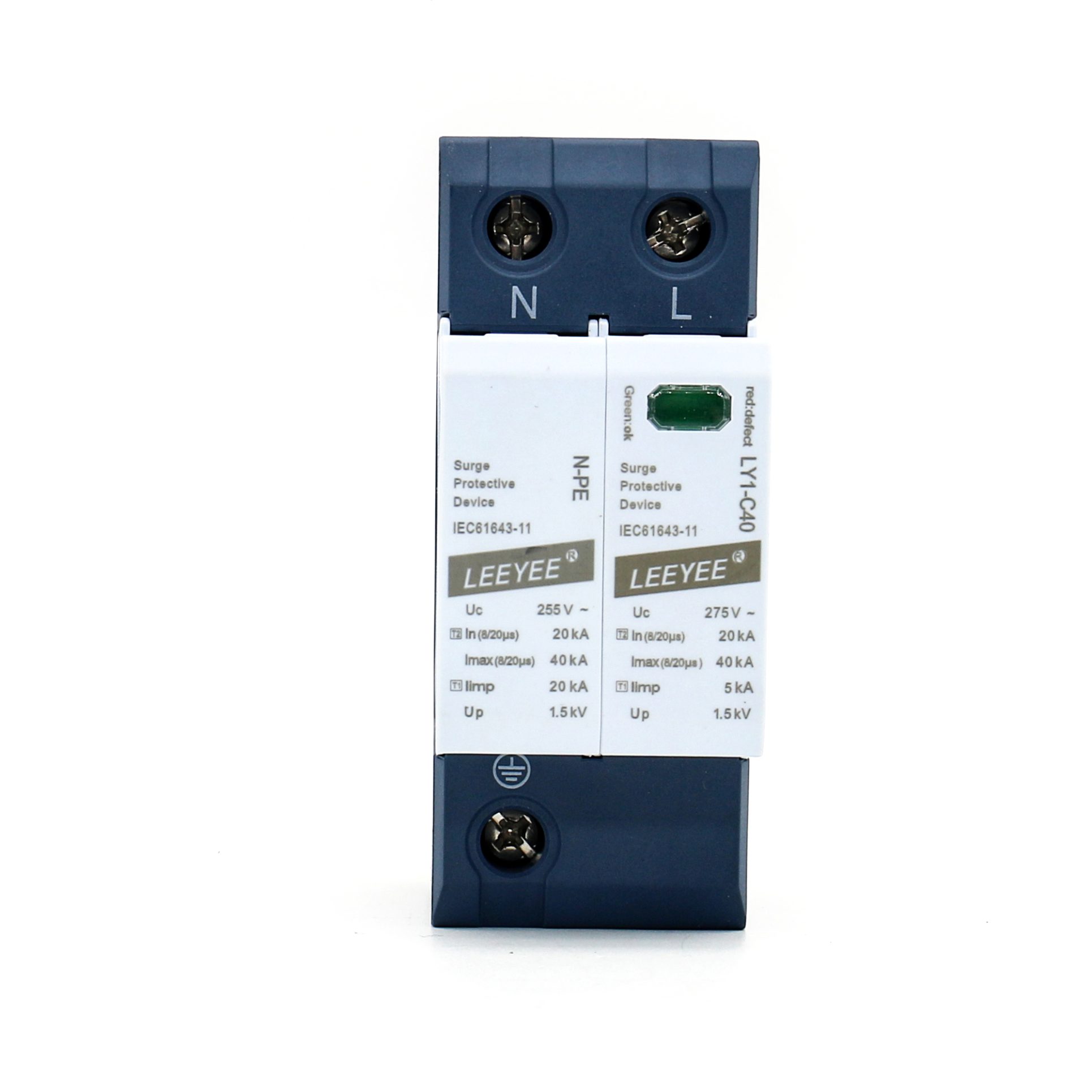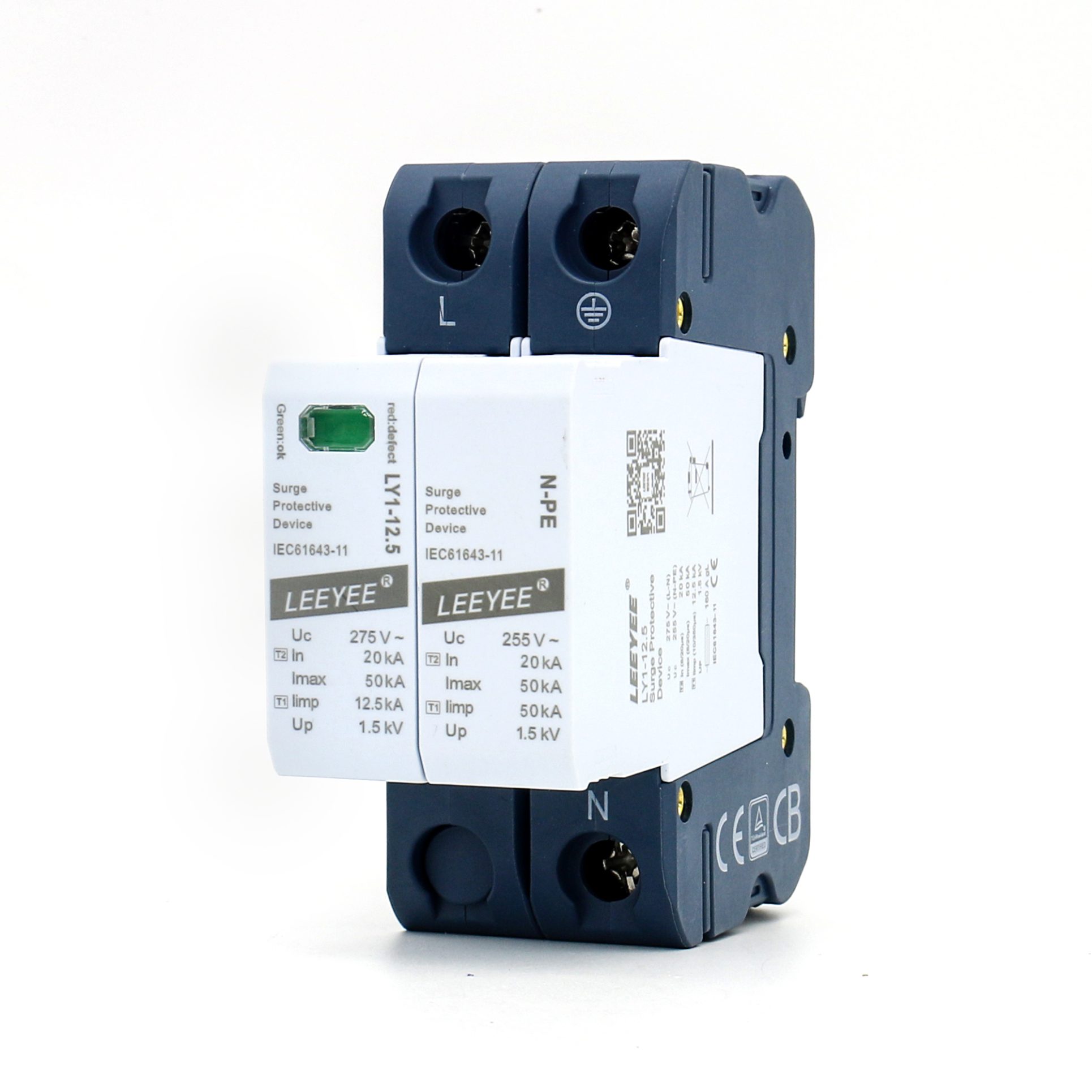Table of Contents
Introduction: The Guardian of Electronics
Imagine a castle under siege, with enemy arrows raining down, threatening to breach its walls. In the world of electronics, these arrows represent surges of electrical energy, capable of causing catastrophic damage to sensitive devices. Enter the surge protective device (SPD), the unsung hero that acts as a shield, absorbing and redirecting these surges to ensure that our technological kingdom remains safe and sound. In this article, we will embark on a journey to explore what SPDs are, how they function, and their critical role in safeguarding our electrical systems.
Understanding Surges: The Storm Before the Calm
Just as unpredictable storms can wreak havoc on a peaceful day, electrical surges can emerge from various sources, often catching us off guard. Here are some common culprits:
- Lightning Strikes: Picture a powerful bolt of lightning illuminating the sky. When it strikes, it generates a surge that can travel through electrical systems, much like a tidal wave crashing onto the shore.
- Power Grid Fluctuations: The power grid is like a bustling highway, with electricity flowing smoothly. However, when maintenance or repairs occur, it can cause sudden spikes or drops in voltage, akin to a traffic jam that causes chaos on the road.
- Switching Operations: Turning on or off machinery can create sudden electrical currents, similar to the shockwaves generated when a bomb is detonated. These surges can ripple through the system, potentially damaging connected devices.
- Equipment Failures: Just as aging infrastructure can lead to structural failures, worn-out electrical equipment can generate surges. A malfunctioning device can act like a loose brick in a wall, compromising the integrity of the entire system.
How Surge Protective Devices Work: The Shield and the Sword
At the heart of every surge protective device is a simple yet effective mechanism designed to absorb and redirect excess voltage. Think of it as a superhero with the power to deflect enemy arrows. Here’s how it works:
1. Voltage Clamping
When a surge occurs, the SPD immediately senses the increase in voltage. Its first line of defense is to clamp down on the excess voltage, preventing it from reaching sensitive equipment. This is akin to a dam holding back a flood, allowing only the appropriate amount of water to flow through.
2. Dissipation of Energy
Once the voltage is clamped, the SPD dissipates the excess energy through its internal components. The most common components include:
- Metal Oxide Varistors (MOVs): These act like pressure valves, opening up to divert excess voltage away from sensitive circuits. When the voltage exceeds a certain threshold, they become conductive and allow the surge to flow safely to the ground.
- Gas Discharge Tubes (GDTs): Think of these as lightning rods for electrical surges. They provide a low-resistance path for the surge to travel, directing it safely into the earth.
- Transient Voltage Suppressors (TVS): These devices are like sentinels standing guard, ready to spring into action at a moment’s notice. They react quickly to voltage spikes, ensuring that sensitive equipment is protected from harm.
3. Grounding the Surge
Finally, the SPD directs the excess energy to the ground, effectively neutralizing the threat. This is similar to a firefighter extinguishing a raging fire by directing water at its base, ensuring that it is completely snuffed out before it can spread.
Types of Surge Protective Devices: The Arsenal of Protection
Just as a knight has different weapons for various battles, surge protective devices come in various types, each designed for specific applications. Let’s explore these options:
1. Type 1 SPD
Type 1 SPDs are like the castle walls, positioned at the entry point of the electrical system. They are installed at the main electrical panel and provide protection against external surges, such as those caused by lightning strikes. These devices are crucial for safeguarding the entire electrical system from the outset.
2. Type 2 SPD
Type 2 SPDs act as a secondary line of defense, installed at distribution panels or sub-panels. Imagine them as the inner gates of the castle, further securing the fortress from any remaining surges that may have slipped past the first line of defense. They protect branch circuits and sensitive equipment from residual surges.
3. Type 3 SPD
Type 3 SPDs are like guards stationed near the throne room, protecting the most valuable assets within the castle. These devices are placed near sensitive equipment, such as computers and servers, providing an additional layer of protection against localized surges that may occur within the facility.
Installation Location: The Strategic Positioning of Defense
Just as a general must carefully plan the positioning of troops, the installation location of surge protective devices is critical for effective protection. Here are some strategic points to consider:
1. Main Distribution Board
Installing Type 1 SPDs at the main distribution board is akin to fortifying the castle’s outer walls. This primary defense point protects the entire electrical system from external threats.
2. Sub-Distribution Boards
Type 2 SPDs should be installed at sub-distribution boards, much like placing sentinels at key access points within the castle. This ensures that any surges that penetrate the outer walls are intercepted before reaching the inner sanctum of sensitive equipment.
3. Point-of-Use Protection
Type 3 SPDs should be positioned as close as possible to sensitive devices. This is similar to having a personal bodyguard for each valuable treasure, ensuring that the most critical assets receive the highest level of protection.
Choosing the Right Surge Protective Device: The Art of Selection
Selecting the appropriate surge protective device is crucial for ensuring optimal protection. Here are some key factors to consider:
1. Voltage and Current Ratings
Just as a knight must choose the right armor for battle, it’s essential to select SPDs that match the voltage and current ratings of the electrical system. Ensure that the SPD can handle the expected loads and surges.
2. Surge Current Capacity
Consider the SPD’s capacity to withstand surge currents. This is like assessing a warrior’s strength; a device with a higher surge current rating can absorb more energy and provide better protection.
3. Response Time
A quick response time is vital for effective surge protection. Choose SPDs that activate rapidly, ensuring that sensitive equipment is shielded from damage during surges. Think of this as having a vigilant lookout who can sound the alarm at the first sign of danger.
4. Compliance with Standards
Ensure that the chosen SPD complies with relevant standards, such as IEC and UL. This is akin to verifying that a knight is equipped with officially recognized armor, ensuring reliability and safety.
Maintenance and Testing: Keeping the Shield Strong
Even the strongest shield requires regular maintenance to remain effective. Here’s why routine inspections and testing are essential:
1. Regular Inspections
Just as a castle’s walls must be checked for cracks and weaknesses, SPDs should be inspected regularly. Look for any signs of wear and tear, including discoloration or physical damage, which could indicate a compromised unit.
2. Functional Testing
Conduct functional tests to ensure that SPDs are operating correctly. This is akin to performing drills to ensure that the castle’s defenses are ready for action at a moment’s notice.
3. Documentation and Records
Keep detailed records of inspections and testing results. This documentation serves as a historical account of the SPD’s performance and can help identify trends or issues over time.
The Importance of Surge Protective Devices in Modern Applications
In today’s technology-driven world, surge protective devices are not just optional; they are essential. Here’s why their role is more critical than ever:
1. Information Technology
In the realm of IT, computers and servers are the lifeblood of businesses. SPDs protect these crucial assets from surges, ensuring that data remains secure and operations run smoothly. Think of SPDs as the guardians of information, preventing data loss and downtime.
2. Industrial Settings
In industrial environments, machinery and control systems are often vulnerable to surges. SPDs act as protectors, ensuring that production processes remain uninterrupted. They are the unsung heroes that keep the wheels of industry turning.
3. Residential Protection
In our homes, SPDs protect valuable electronics such as televisions, gaming consoles, and home automation systems. They safeguard our daily lives against the unexpected storms of electrical surges, allowing us to enjoy our technology without fear.
Future Trends in Surge Protective Devices: The Evolution of Defense
As technology advances, so do surge protective devices. Here are some emerging trends to watch for:
1. Smart Surge Protection
The future of SPDs lies in smart technology. Imagine SPDs equipped with monitoring capabilities that can provide real-time data on surge events and system health. This is akin to having an intelligent defense system that can alert you to potential threats before they escalate.
2. Integration with Renewable Energy Systems
As renewable energy sources become more prevalent, SPDs will need to adapt to the unique challenges posed by solar and wind systems. They will act as vital protectors, ensuring that these green technologies operate safely and efficiently.
Conclusion: The Unsung Heroes of Electrical Systems
Surge protective devices are the silent sentinels that safeguard our electrical systems from the unpredictable storms of electrical surges. By understanding their functions, types, and importance, we can better appreciate their role in protecting our valuable technology. Just as a well-fortified castle stands strong against invaders, a properly equipped electrical system can withstand the surges of modern life. Remember to choose, install, and maintain your SPDs wisely, ensuring that your technological kingdom remains safe and secure for years to come. If you have any questions or need further information about surge protective devices, feel free to reach out. We are here to help you safeguard your electrical assets!


